NOVEMBER 28, 2021: Although the day was fully scheduled, we thought we could still squeeze in a couple of more hours In Evora. Last night we watched a video about the Evora Jewish quarter, and in the video they showed a small commemorative plaque. We wanted to find that plaque. We also wanted to return to the museum that we missed yesterday and look for the Hebrew tombstone that we had read was there. The hunt was on!
Our first destination was Praça do Giraldo – Giraldo Square. Yesterday, it was the only place we noticed that they have recycling bins. We had a bagful of items to throw in. While walking to the square, we went under, over and through barriers that had been set up for the day’s marathon. As we reached the square, the noises grew louder and louder. I had never been to a running event, and this was amazing – such excitement, such energy in the air. The race had not yet started, and people were gathering in the square. Loud, loud, loud rhythmic music was playing. A start gate and an end gate had been set up. We knew there would be a marathon today but did not realize we would see any of it up close. Great surprise!
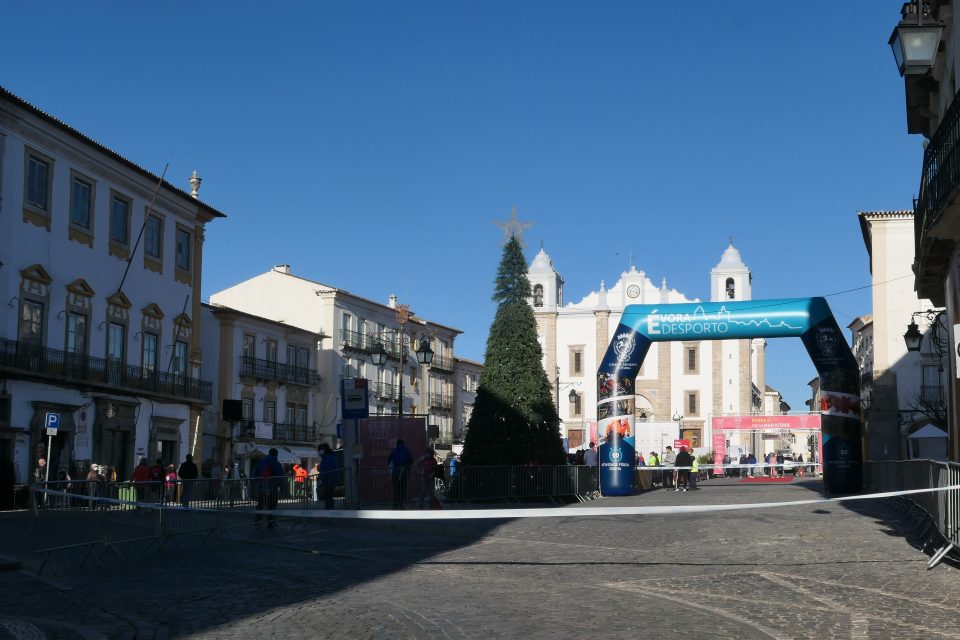
Giraldo Square set up for the Evora marathon
We continued our way to the Jewish quarter. Once again we rambled through all the streets but this time specially looking for the plaque. Good that the hunt is half the fun because we did not find anything.
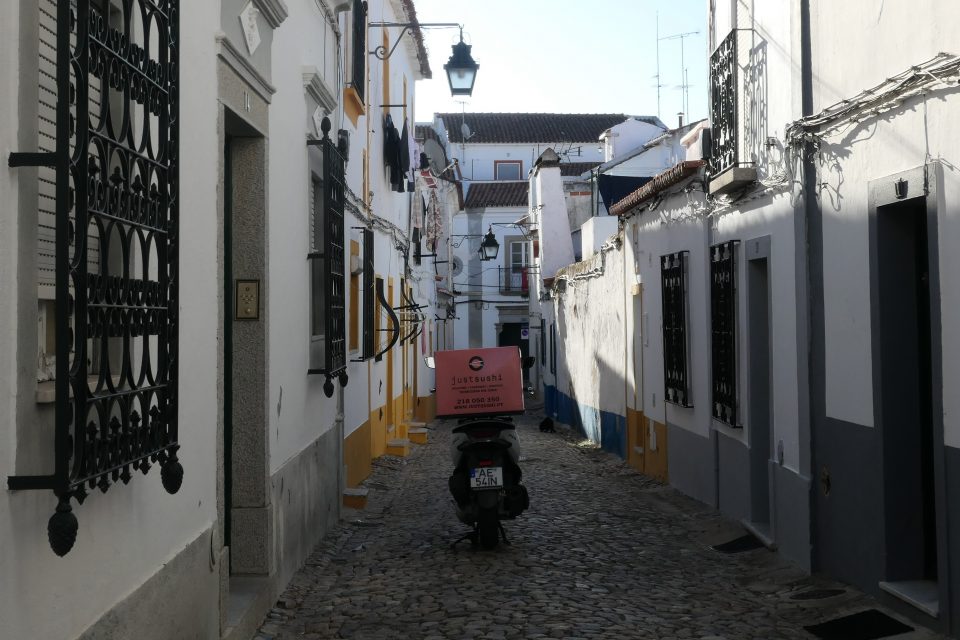
A street in the Jewish Quarter in Evora. In Portugal, you constantly see the new with the old – a sushi delivery in the old city.
Returning to the square on our way to the museum, the square was now packed. There was a stage with a group of people, leading the crowd through warm up exercises to the music. Hundreds of heads bobbing together up and down as they worked out. Happiness was in the air. Groups posing for photographs. It was all so interesting.
We left the plaza and continued to the museum. At the entrance desk, we asked about the Hebrew tombstone, but they knew of no such thing. The guard even came with us to help us search. Once again, no luck. They told us that there are many items in storage – they have more items than they have room to display. Maybe it is there.
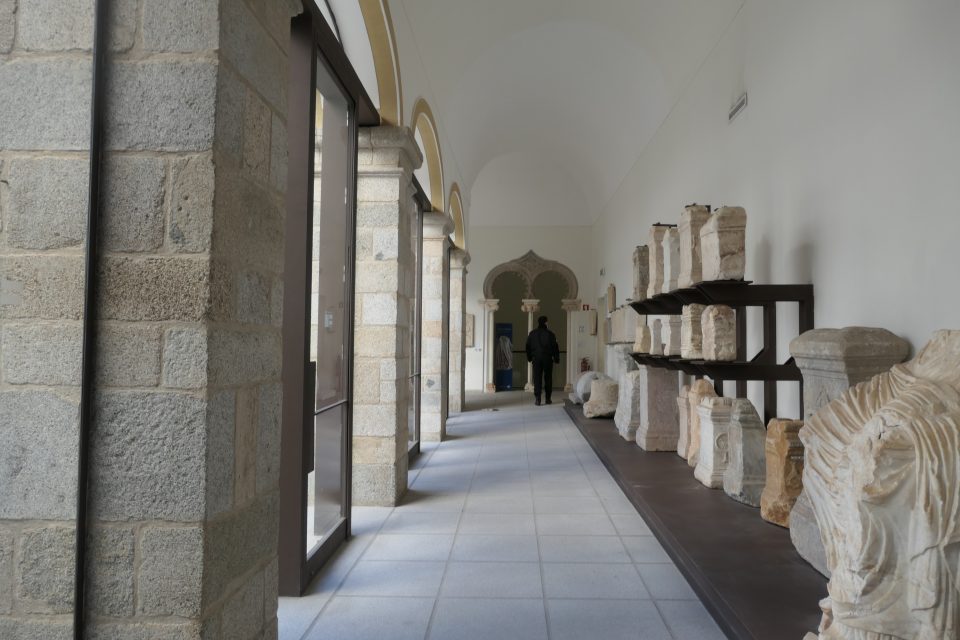
Inside the Museum of Evora 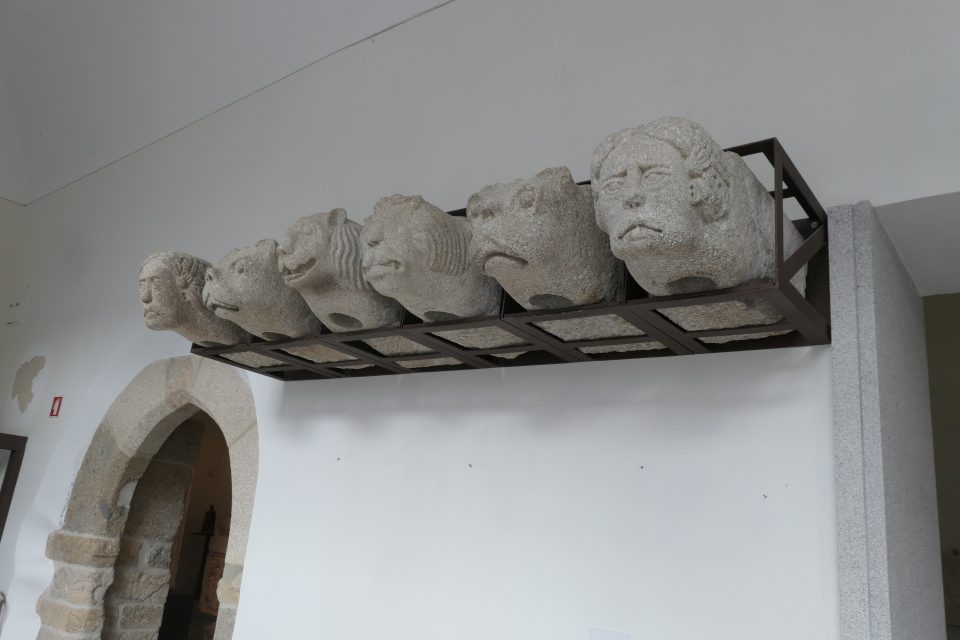
While in the museum, a load commotion had started outside. I went to see – a band had set up across the street and was serenading the hundreds of runners as they passed. Some runners were young, some were old, some men, some woman, some obviously fit, some less so – just everybody running along together while the music played. The crowd cheering them on. This was wonderful!
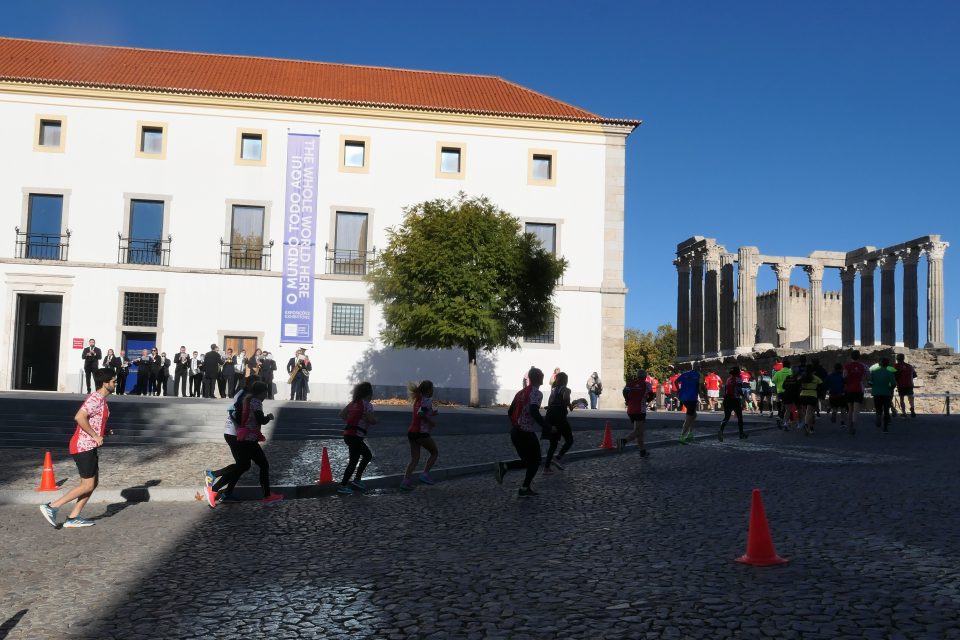
A band serenades the marathon runners
As we were returning to our apartment, I suddenly realized that we had not seen any cars in the city all morning. Yesterday, cars were everywhere. Several times we had needed to squeeze against a doorframe to let them pass in the narrow lanes. Today nothing. They must have closed the streets for the marathon. Oh no! Our car was parked about 500 meters away – outside the city gates. How were we going to get our 3 big suitcases, 1 small suitcase, 2 backpacks, 6 small bags and 1 hiking pole (must not forget the hiking pole) to our car if we cannot drive to the apartment? The answer was painful, especially for Mark who bore the brunt of it. We shlepped our stuff over the rocky stone streets (not conducive to suitcases with wheels) slowly and made several trips back and forth. Sort of put a damper on the excitement of the marathon this morning.
Once the car was loaded, we were happily on our way, hopeful that the rest of the day will go better. Our first destination was Monseraz. This was a small medieval town on the border with Spain. Most of the way was on the small, but good roads that we usually drive. However, this time we were also on roads that seemed much more back country – very narrow, very bumpy, full of holes. We were driving behind a motorhome and watched him bounce along. Luckily this was not such a long stretch, and we returned to the usual good roads. Except for today, the driving in Portugal has been easy. Roads are very good, and everything is well signposted. You regularly see maintenance workers cleaning the side of the roads – trimming grass, pruning trees.
Throughout the drive to Monsaraz, the scenery was beautiful. It was mostly agricultural land. Sometimes all you saw for miles and miles were olive trees. In other areas, cork trees. Grape vines interspersed. Villages were small and scattered far apart. Each village was always a collection of whitewashed houses with either some yellow or blue trim. A large church always dominated over the houses.
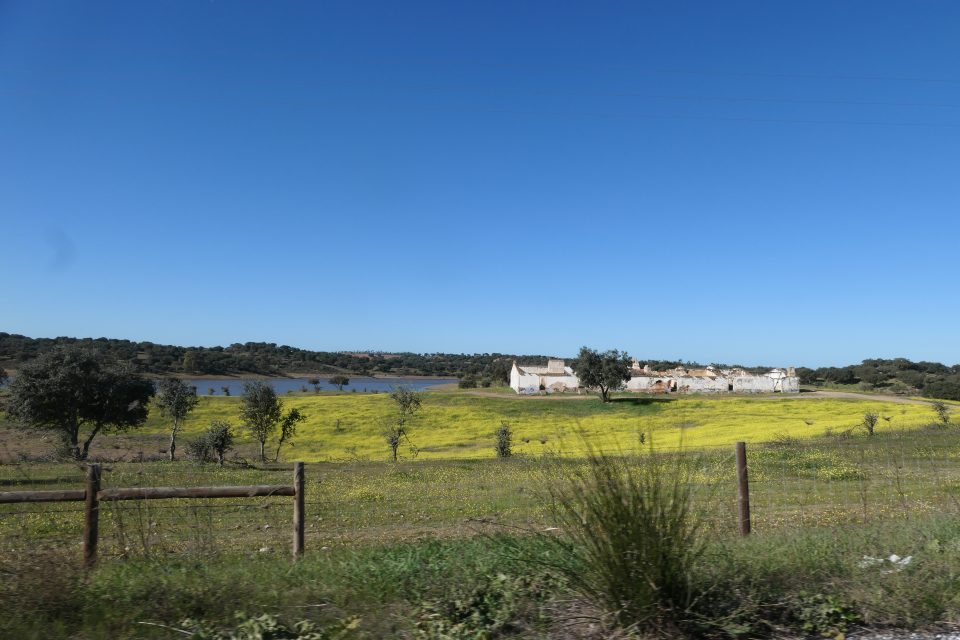
On the way to Monsaraz 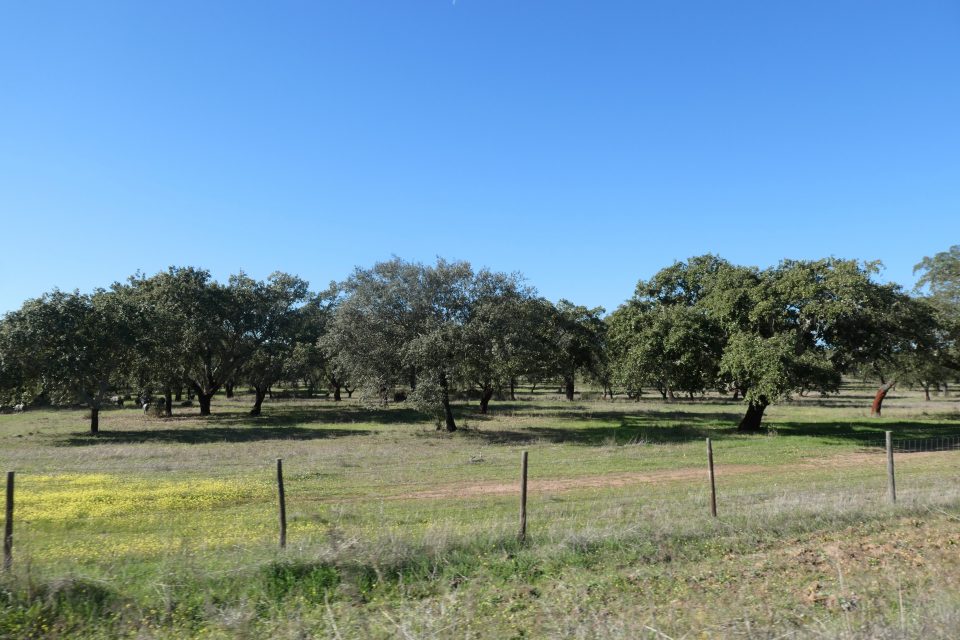
Fields of cork trees 
Rows of olive trees 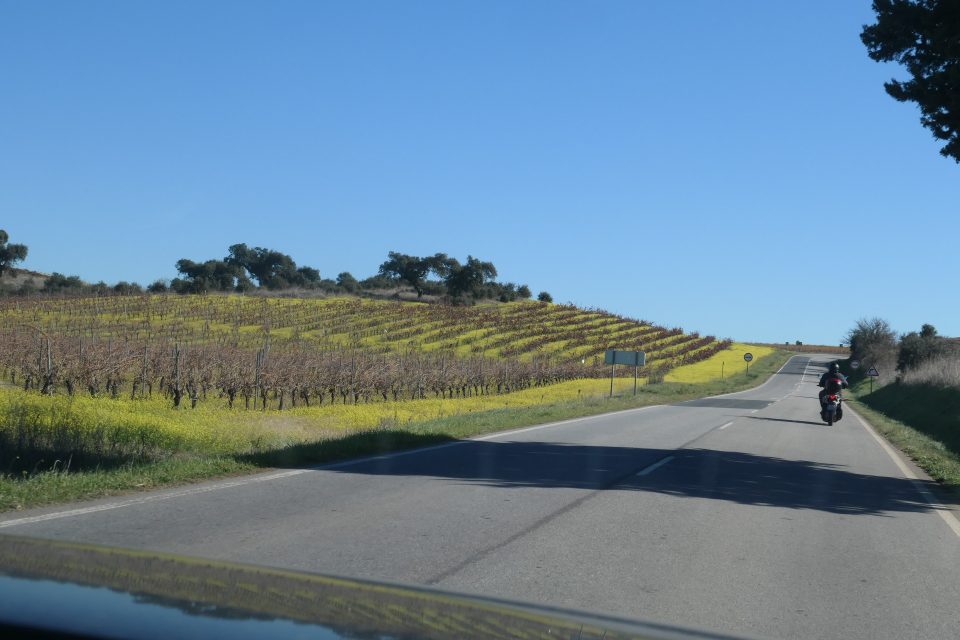
Yellow wildflowers below the grape vines
As we reached Monsaraz, the area was full of lakes. There are many dams in the region, and each creates its own lake. Near Monsaraz, the dam created a huge shimmering lake that wove in and out among the hills. Stunning.
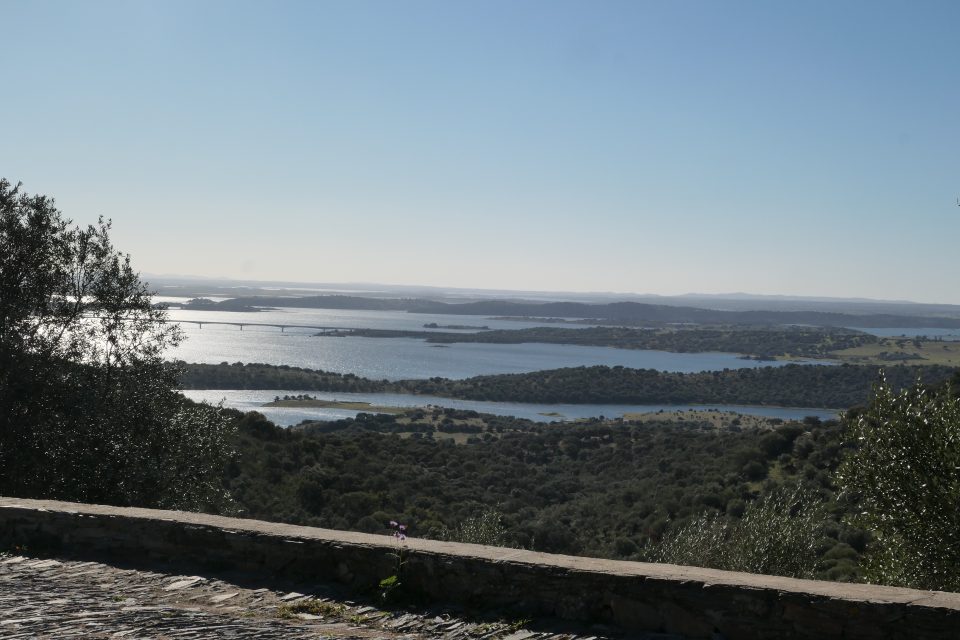
The view as we approach Monsaraz 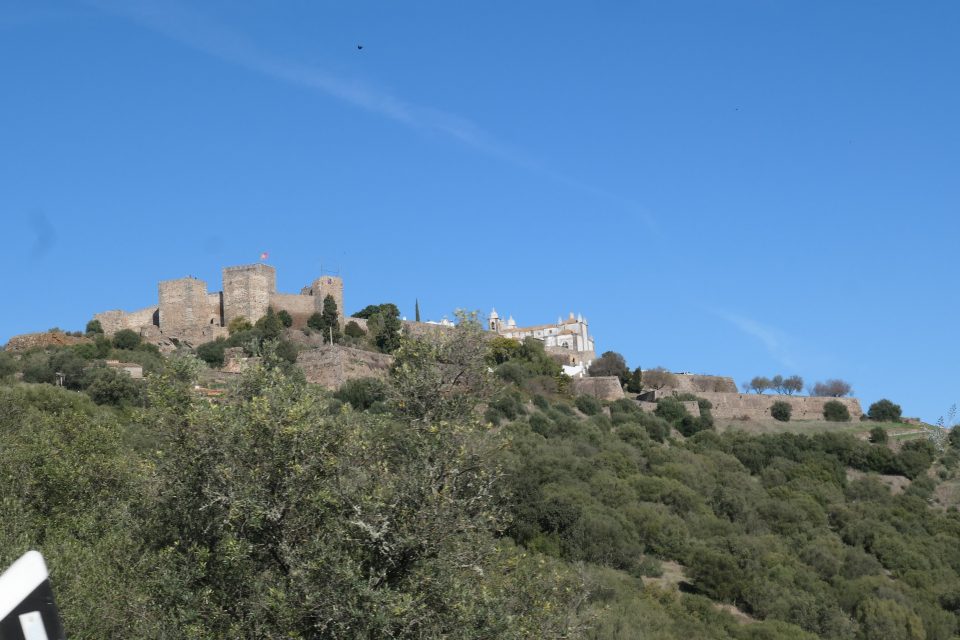
Monsaraz
Monsaraz was also amazing. A very tiny village, sitting spectacularly on a hill overlooking the hills and lake below. Our destination in the village was The Casa da Inquisição – The House of the Inquisition. It was said that this house was used as a prison during the Inquisition and is where they kept the prisoners until they were judged in the Court of Holy Office in Évora. This turned out to be a small two-story building, with a limited exhibit about the inquisition in Monsaraz. Nicely done, even had English translations.
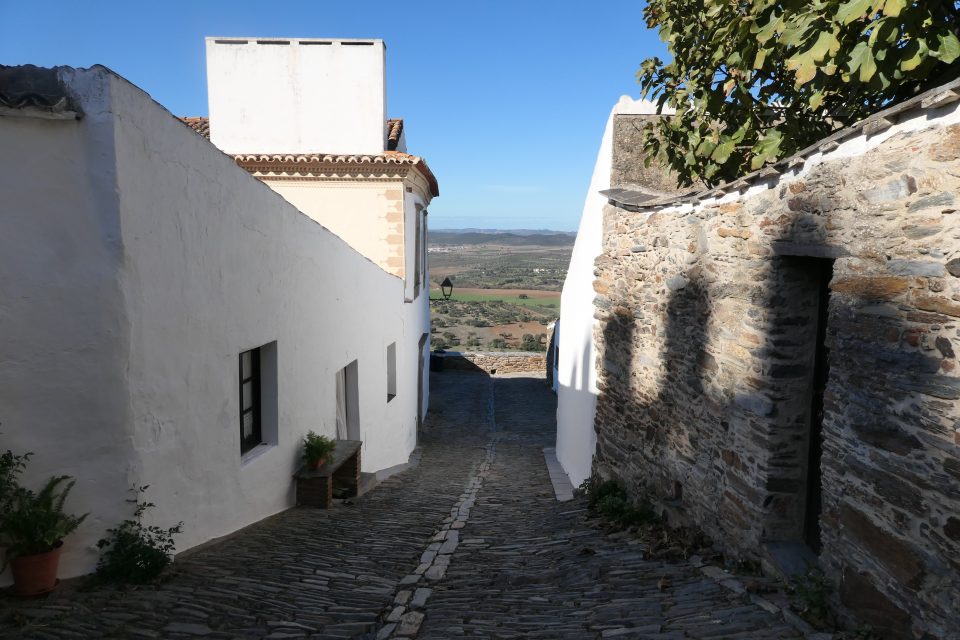
The Casa da Inquisição – the house on the left 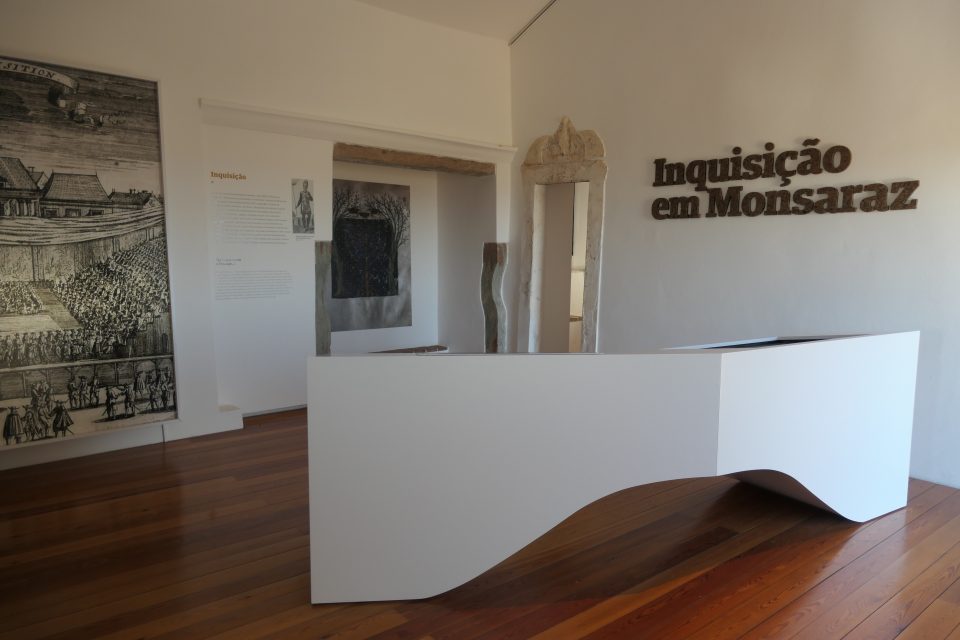
Inside the Casa da Inquisição 
English translation could have been better 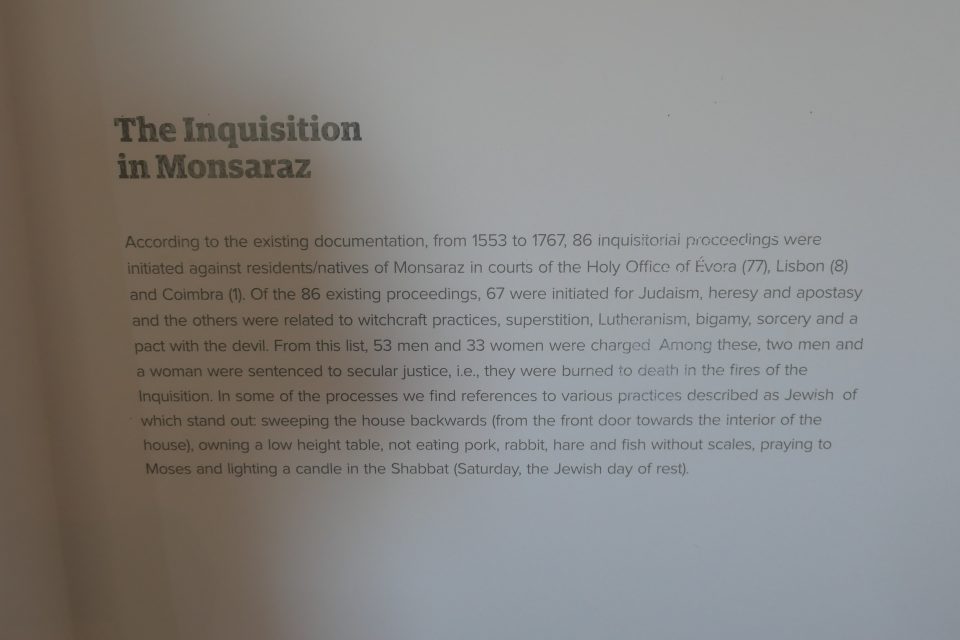
A good summary
From here, we wandered around the village enjoying the views. We climbed the stairs to the top of the castle and had lunch with an amazing view.
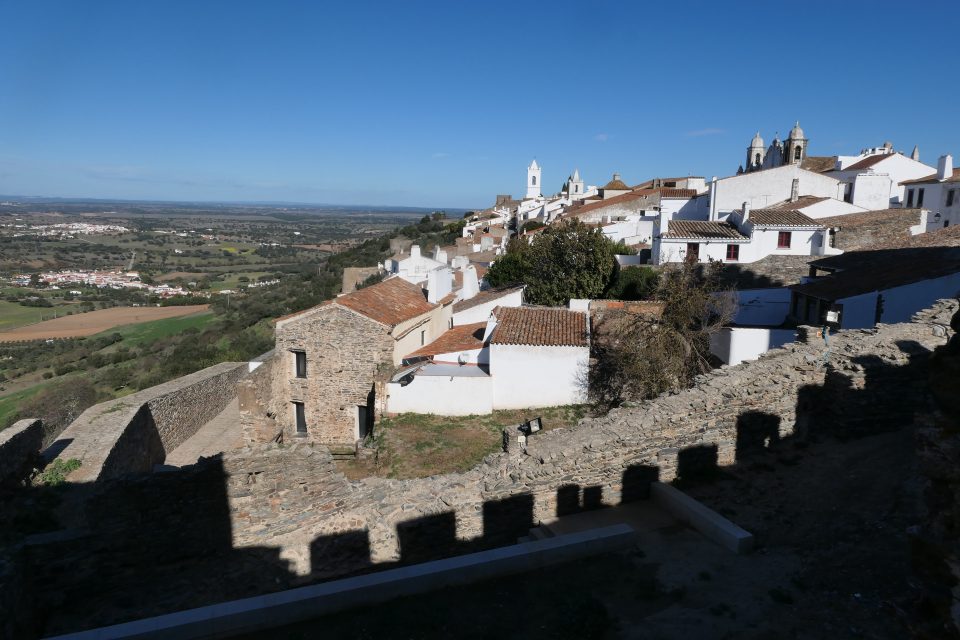
Monsaraz 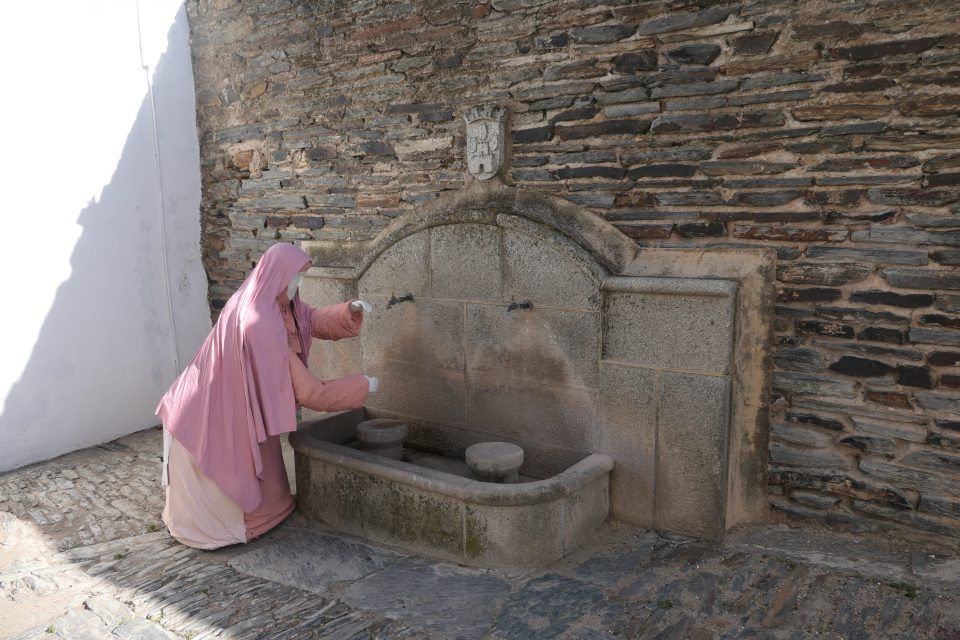
The village was decorated with dolls doing daily tasks from medieval times 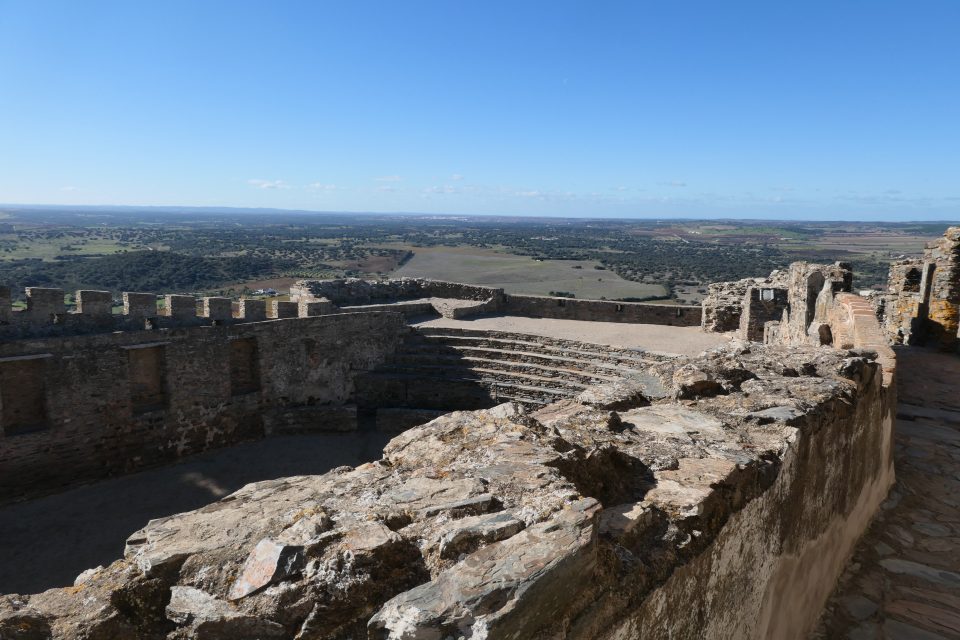
The top of the castle 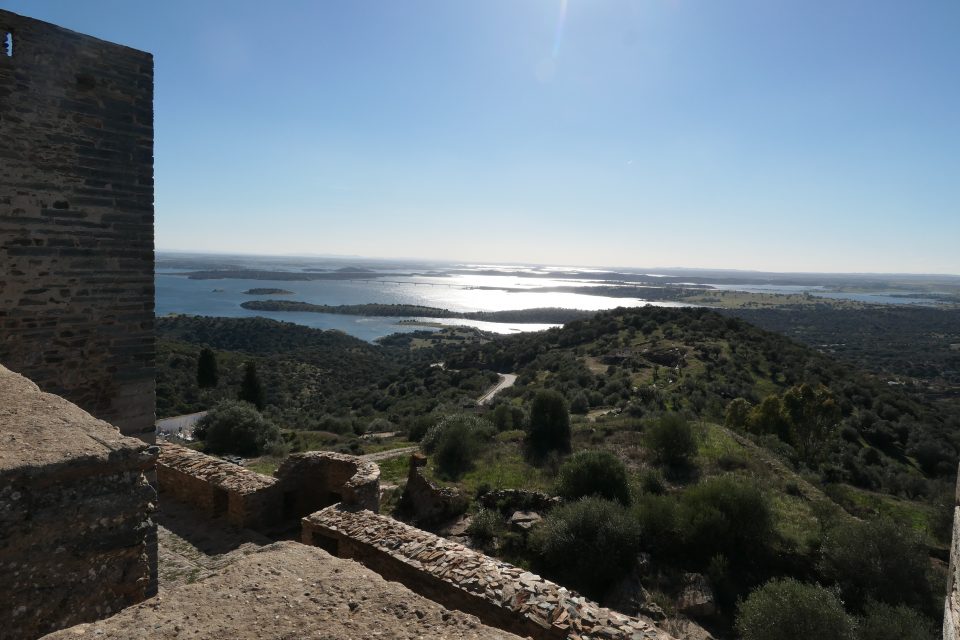
Spectacular views 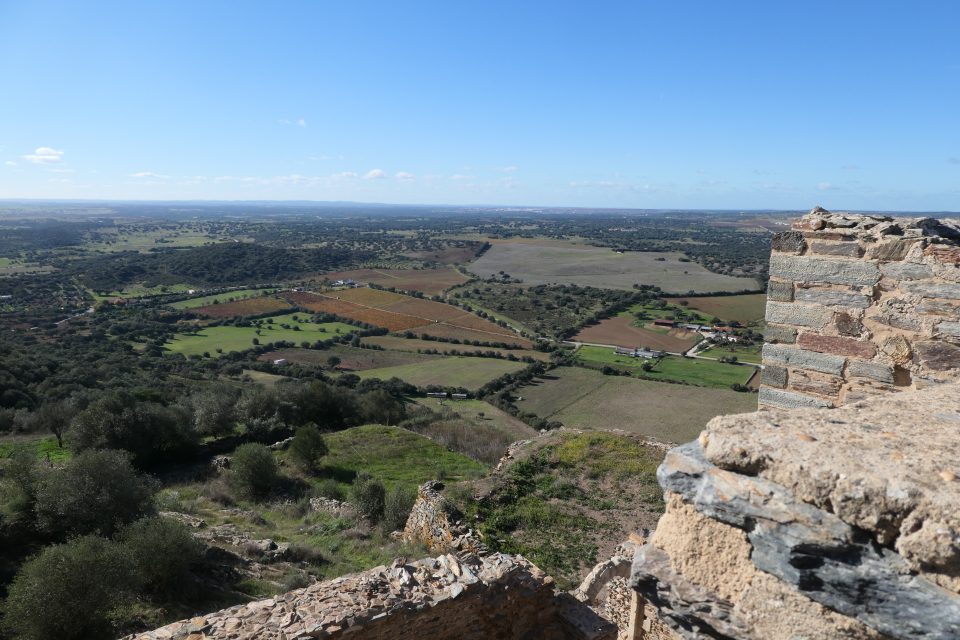
Our next destination was Mértola. This was out of our way, a real long shot, and probably the least chance to succeed of all we have done, but I wanted to give it a try and Mark was game. While searching Jewish Heritage Portugal on ebay (yes, I look everywhere) I came across a stamp. Turns out, in 2004, Portugal released a series of six postage stamps on the theme of Jewish Heritage. One of the stamps, had a picture of a broken stone with a menorah. Looking at a photo of the stamp closely, I noticed that on the side of the stamp, it said Museum of Mértola. Other than this, I found no other information.
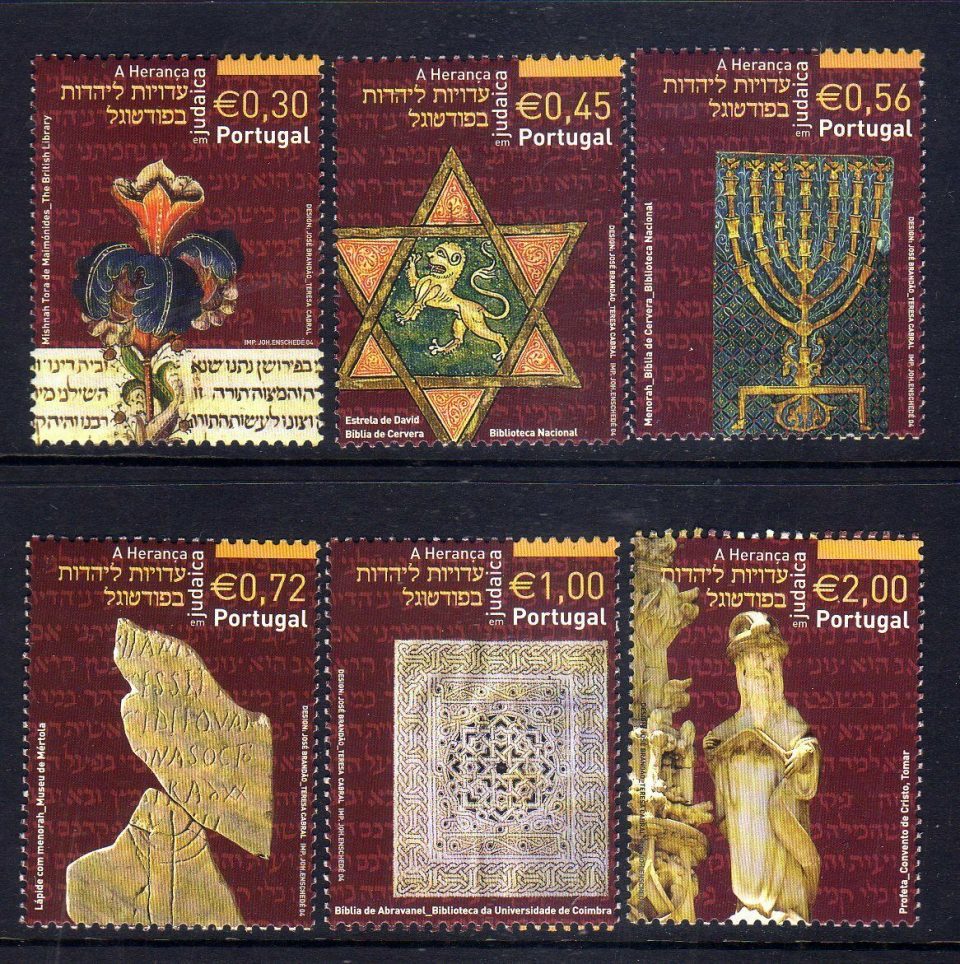
The set of Portuguese Jewish Heritage stamps
Mértola was two hours south of Monsaraz, and instead of driving inland, along the main roads, we were on small winding roads paralleling the border with Spain. The landscape continued to astound. Who knew Portugal was so beautiful? Way beyond what I had expected.
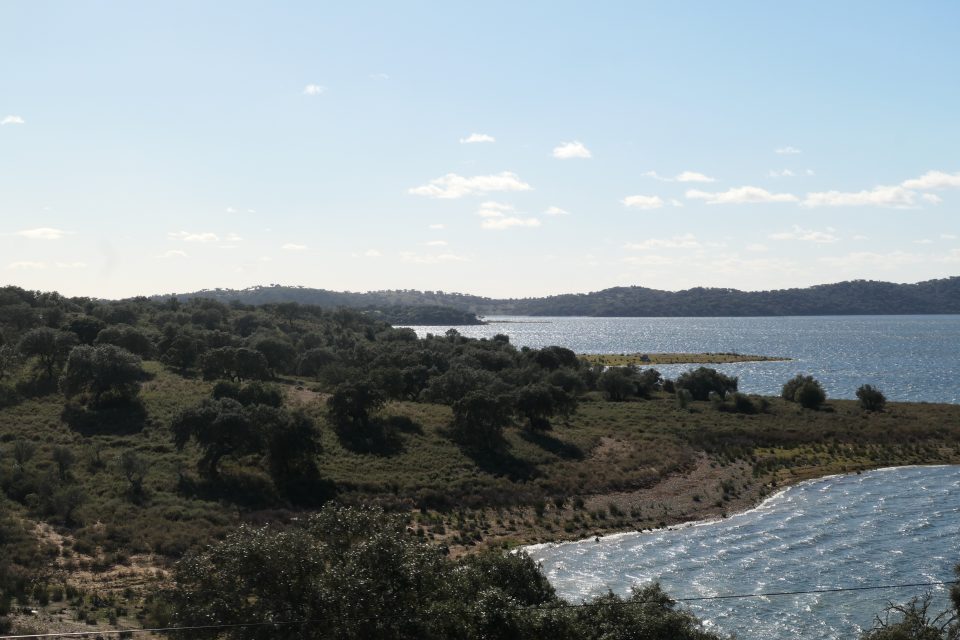
On the way to Mértola 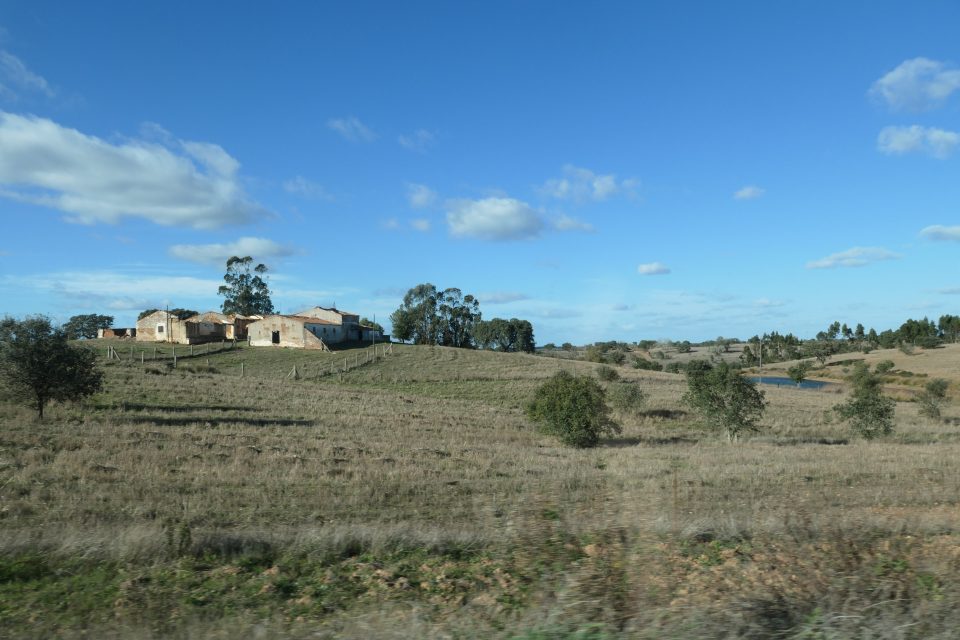
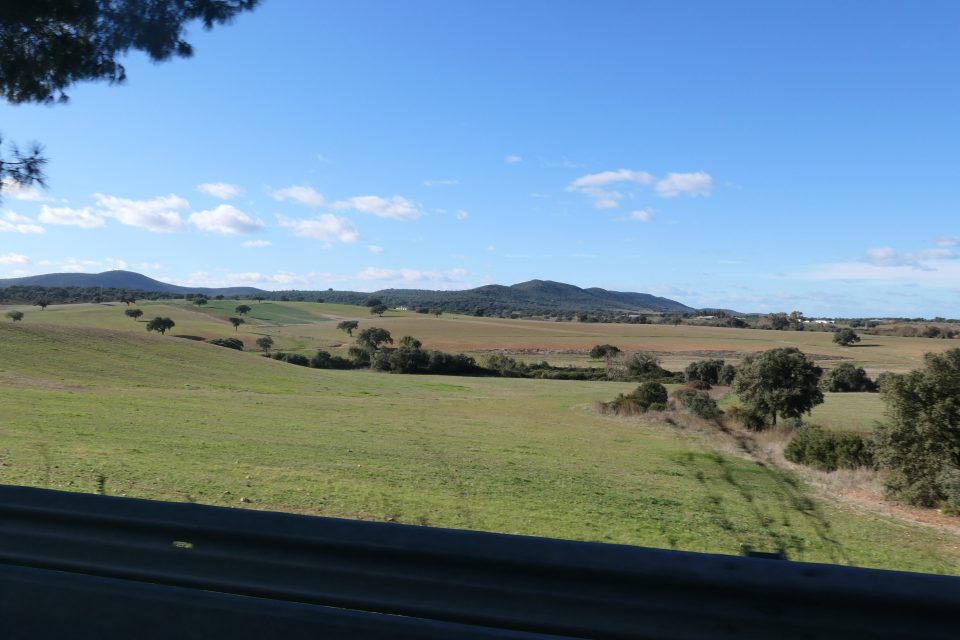
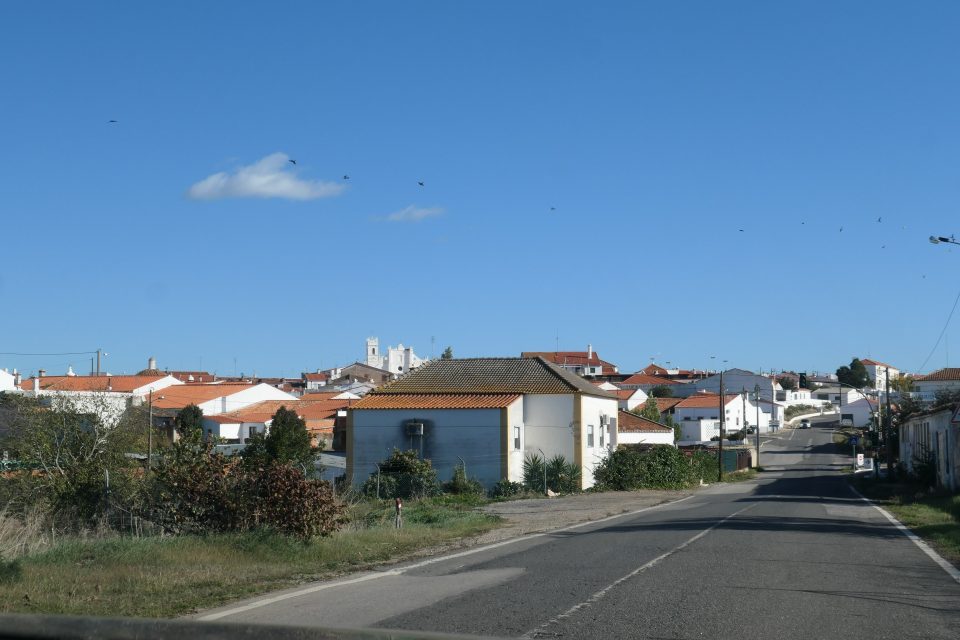
Passing through villages of whitewashed houses and always a church standing tall 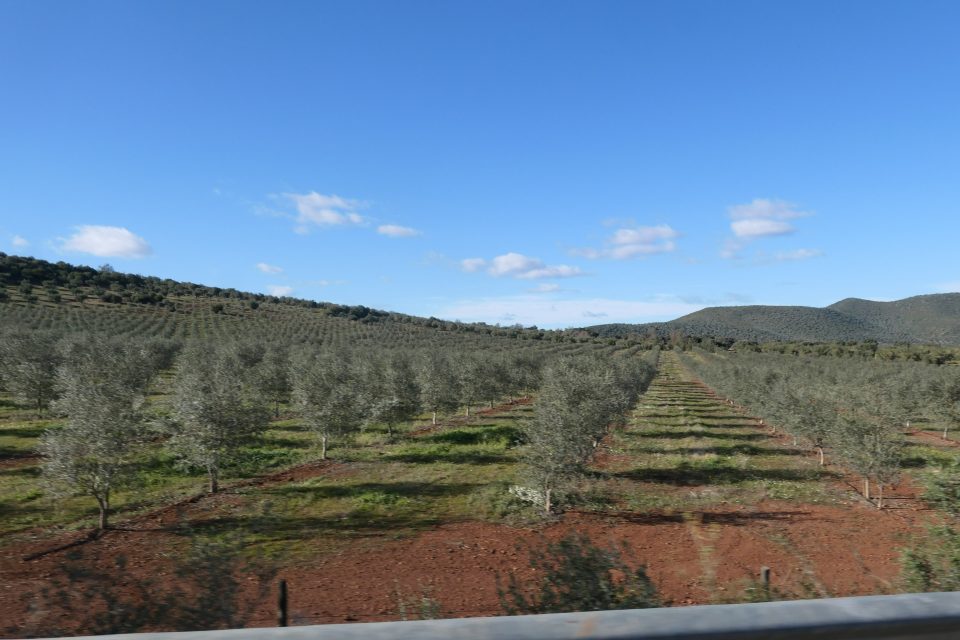
Mértola was another spectacular village, siting high on the hill with the river below. Mértola had several museums, and I selected the one that seemed the most likely – Museu de Mértola Basílica Paleocristã. We drove the narrow streets straight to the museum. After this morning, we had low expectations of finding anything. We entered the museum and showed the clerk a photo of the stamp on our phone. He pointed to the wall opposite, and there it was! It was the exact item from the stamp. Wow! Our search succeeded! From the plaque on the wall, we learned that researchers think that the menorah testifies to a Jewish presence in the area as early as the fifth century.
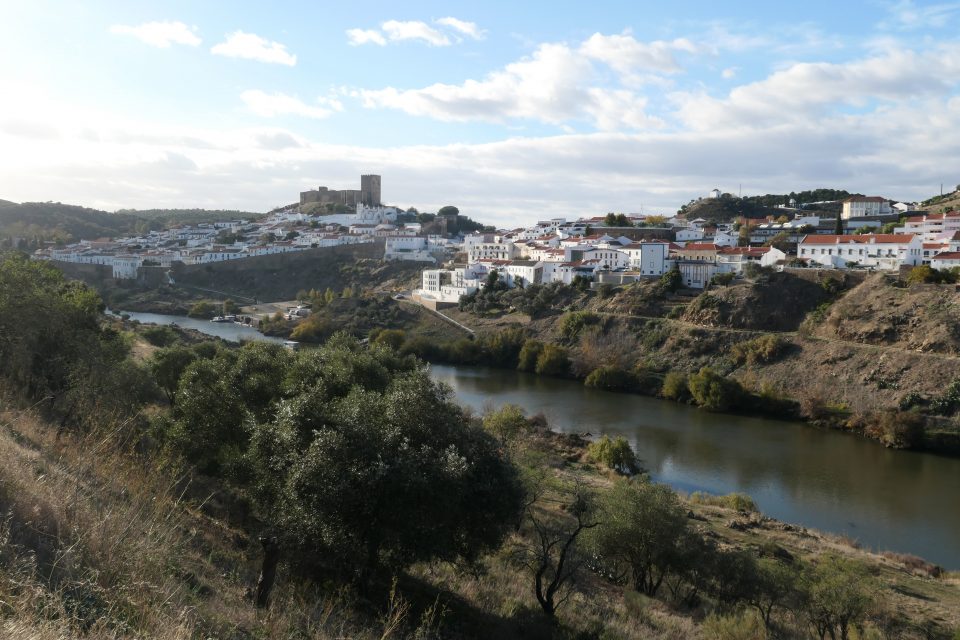
Mértola 
The stone from the stamp 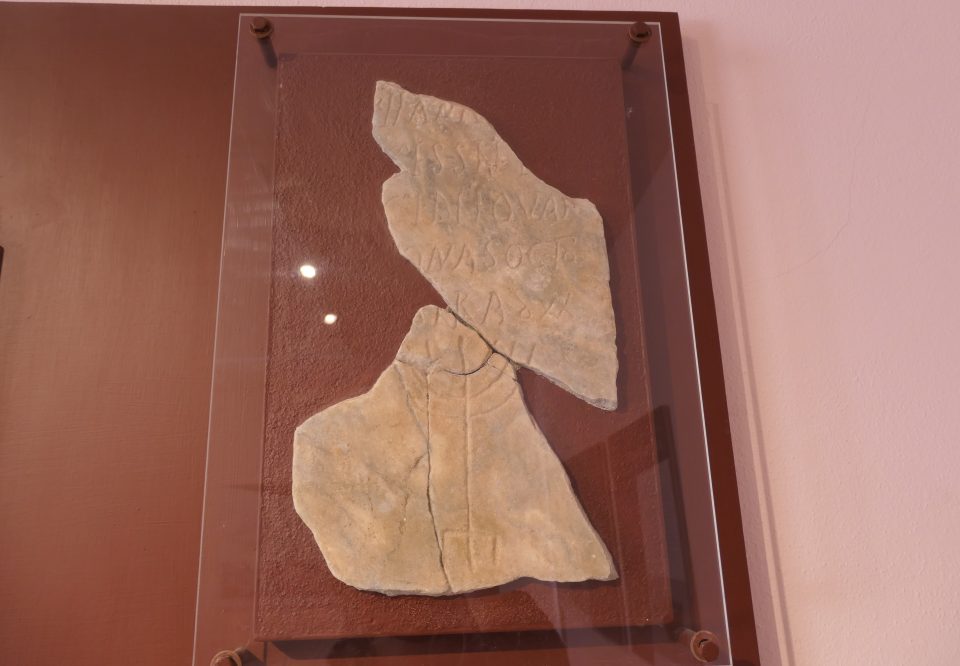
The museum was small, on display were just a few stone pieces found in the area. They also had part of an archaeological dig in the room. This looked very similar to the Roman ruins we see in Israel. As Mark said, they all used the same architect.
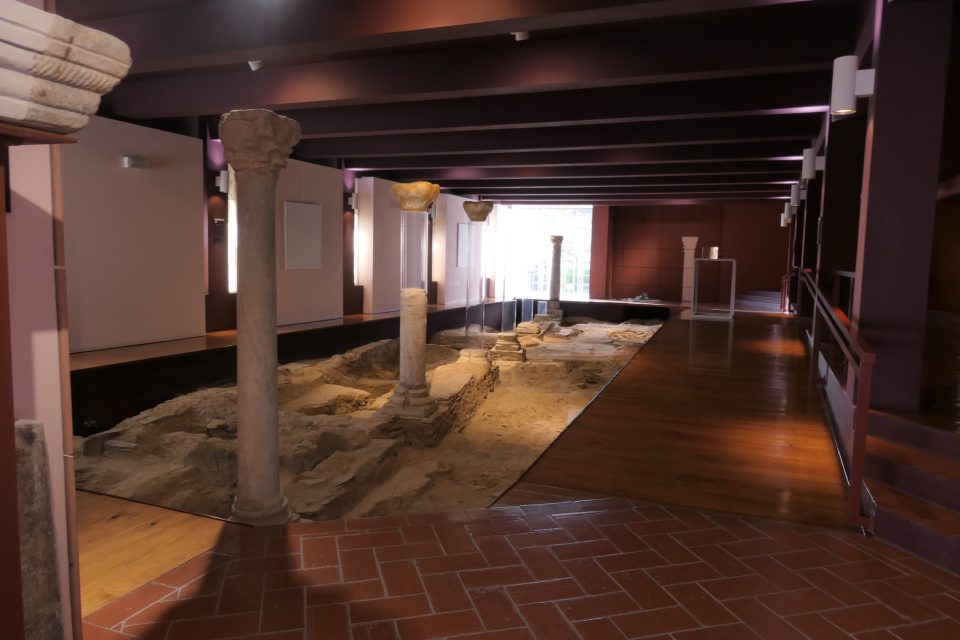
Inside the musuem
We did not stay long. We still had another long drive to reach our final destination for the night and always prefer not to arrive in the dark.
Another village, another castle on top of the hill – no, we are not yet sick of seeing these. Each one is unique in a special way and to discover a new place is still fun. This was especially true today knowing that this was our last day in the area, and we are seeing our last medieval villages. Tonight, we reached the Algarve, the very south of Portugal, on the Atlantic Ocean. It is a very built-up area, a tourist hot spot but with lots of natural beauty – cliffs and beaches at the water’s edge. There is very little Jewish content for us to see there. It will be a week of mostly sightseeing and hiking. Stay tuned.
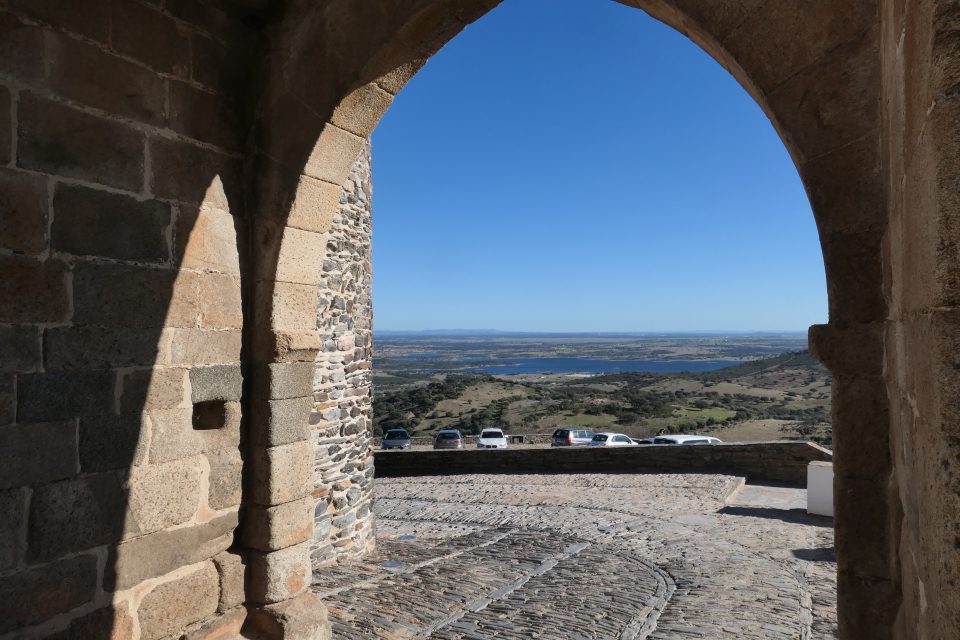
Pretty amazing that we found that stone carving based on a postage stamp.
I don’t’ think “dynamizing” is a real word. . 🙂